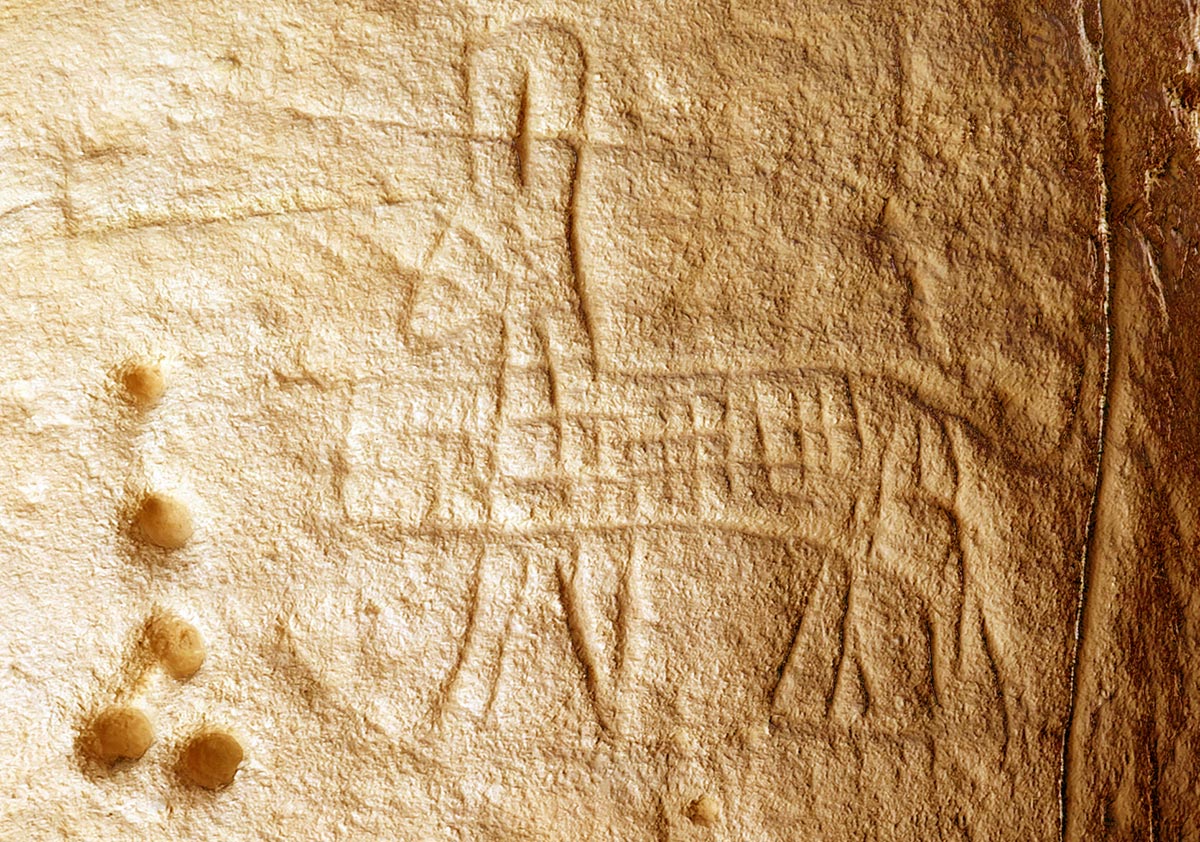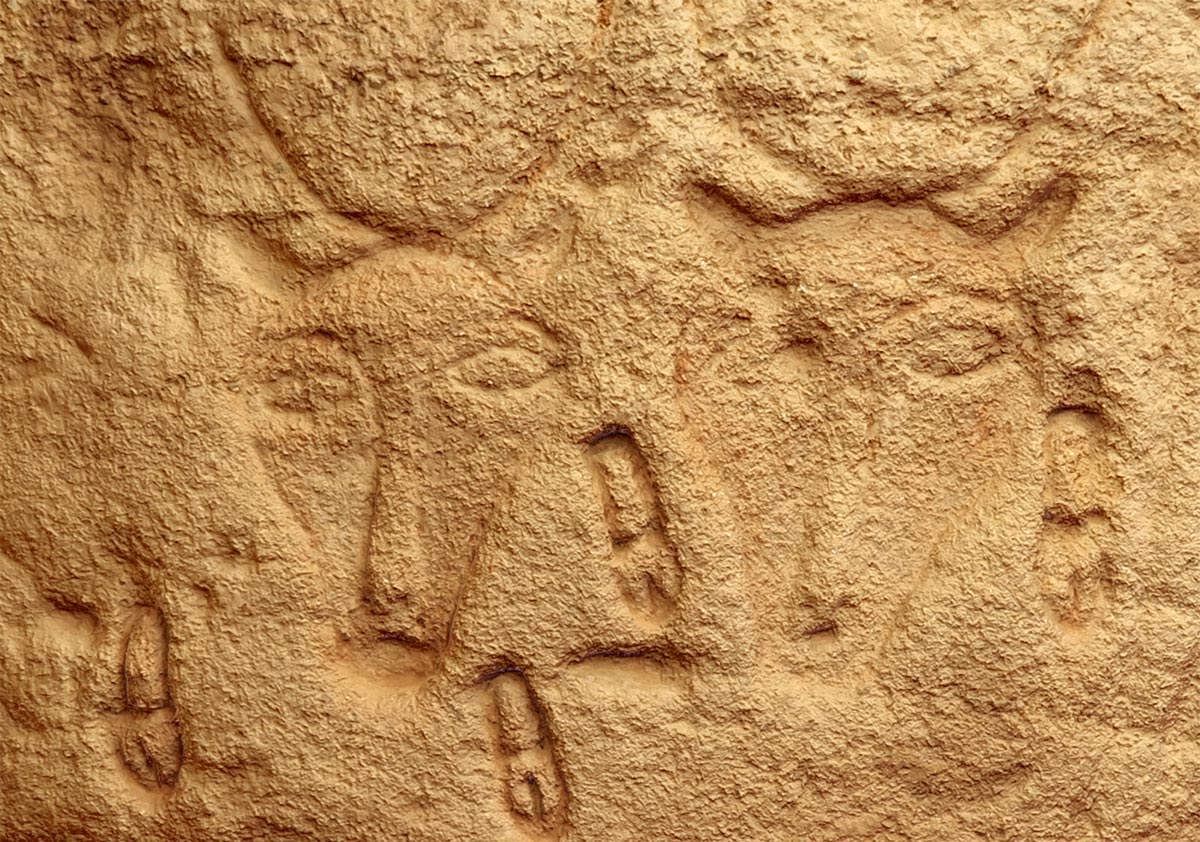Temple Graffiti
Religious Graffiti

The Kelsey Museum project has documented 642 ancient and medieval graffiti in the temple, mostly on the columns and on the cut stone blocks of the wall that separates the outer two rooms. Many of these clearly have religious meanings.
One religious image is the graffito of a ram, a symbol of the Kushite form of the god Amun. Others include horned altars, which were built in temples during the Meroitic period, and offering tables, which had been in use for centuries as places to leave offerings of food and drink for the dead. Palm fronds and a lotus flower also have meanings related to fertility and regeneration. Crosses and an image of a church are religious images dating to the Christian period.
The most common marks in the temple are fingertip-sized holes where the soft stone has been scooped out by the pilgrims to be ingested. Many people believed that stone from an ancient, powerful monument had the power to protect, heal, and grant fertility.
Finally, a few boats and a single image of a sandal likely symbolize the pilgrim’s journey to the temple, representing the act of pilgrimage itself.
Enigmatic Graffiti

A small number of graffiti at the temple are not obviously religious, but this might reflect how much is still unknown about religion in Kush. A good example is an image of two horned bovine heads with human eyes, each framed by two small hooves. The combination of human and animal imagery suggests that these represent supernatural creatures, but we do not know how they fit into Kushite ideas of the spiritual world.
Human figures might also be connected to ritual practice. Two archers depicted in profile reflect a traditional Kushite emphasis on archery. But do they also represent some aspect of myth? A seated figure holding a staff may represent a king or a god in human form. A number of animal graffiti are also present. Most common are birds, but there are also horses, some of them carved in beautiful detail, and some also depicting riders.
An enigmatic group of textiles with fringe or tassels have few parallels in other graffiti or rock art. While the specific meanings of these graffiti are unclear, their presence in the temple among the other clearly ritual graffiti suggests that they, too, may have had religious significance.

